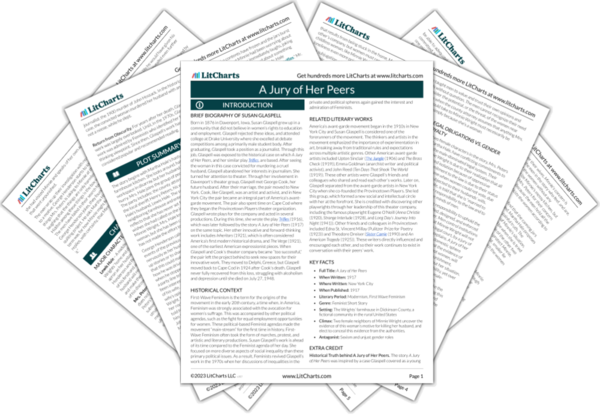Born in 1876 in Davenport, Iowa, Susan Glaspell grew up in a community that did not believe in women’s rights to education and employment. Glaspell rejected these ideas, and attended college at
Drake University where she excelled at debate competitions among a primarily male student body. After graduating, Glaspell took a position as a journalist. Through this job, Glaspell was exposed to the historical case on which
A Jury of Her Peers, and her similar play
Trifles, are based. After seeing the woman in this case convicted for murdering a cruel husband, Glaspell abandoned her interests in journalism. She turned her attention to theater. Through her involvement in Davenport’s theater group, Glaspell met George Cook, her future husband. After their marriage, the pair moved to New York. Cook, like Glaspell, was an artist and activist, and in New York City the pair became an integral part of America’s avant-garde movement. The pair also spent time on Cape Cod where they began the Provincetown Players theater organization. Glaspell wrote plays for the company and acted in several productions. During this time, she wrote the play
Trifles (1916), which was later followed by the story
A Jury of Her Peers (1917) on the same topic. Her other innovative and forward-thinking work includes
Inheritors (1921), which is often considered America’s first modern historical drama, and
The Verge (1921), one of the earliest American expressionist pieces. When Glaspell and Cook’s theater company became “too successful,” the pair left the project behind to seek new spaces for their innovative work. They moved to Delphi, Greece, but Glaspell moved back to Cape Cod in 1924 after Cook’s death. Glaspell never fully recovered from this loss, struggling with alcoholism and depression until she died on July 27, 1948.
